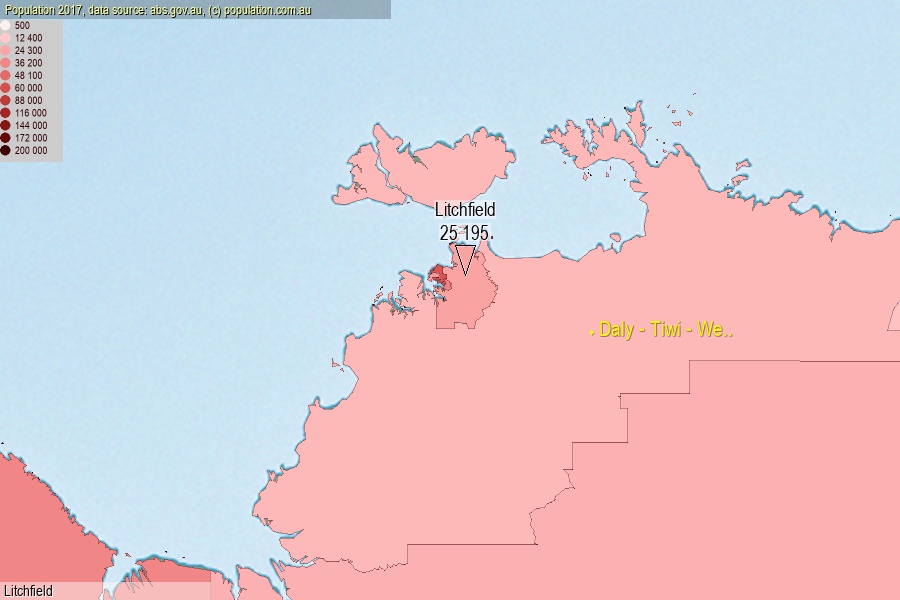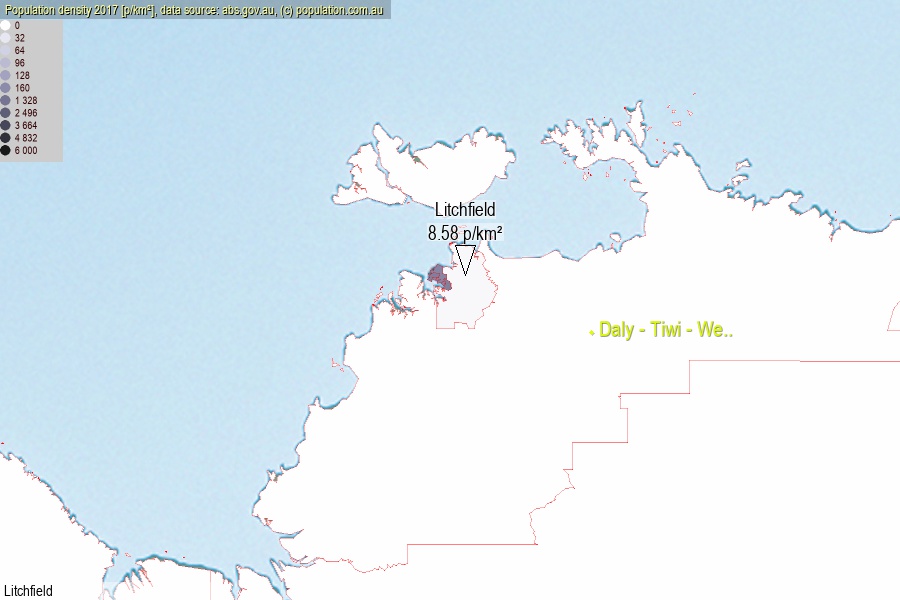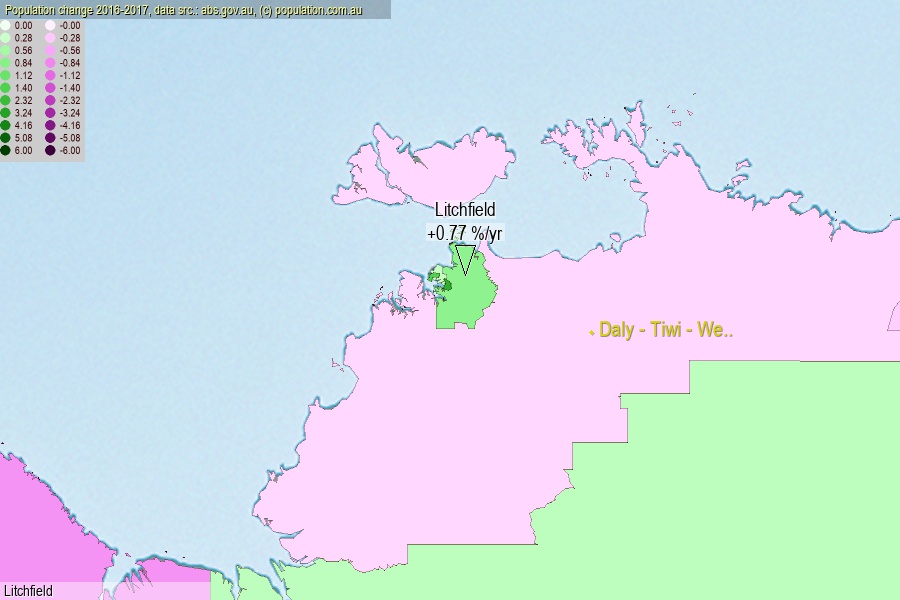 population.com.au
population.com.auLast official estimated population of Litchfield (as Statistical Area Level 3) was 25 195 people (on 2017-06-30)[2]. This was 0.10% of total Australian population and 10.213% of NT population. Area of Litchfield is 2 938.00 km², in this year population density was 8.58 p/km² . If population growth rate would be same as in period 2016-2017 (+0.77%/yr), Litchfield population in 2025 would be 26 785. [0]



Click to enlarge. Litchfield is located in the center of the images.
Population [people], population density [p./km²] and population change [%/year] [2]
View borders » (new window) [4]
[1991-1992] +8.31 %/Y
[1992-1993] +8.61 %/Y
[1993-1994] +6.81 %/Y
[1994-1995] +8.96 %/Y
[1995-1996] +7.25 %/Y
[1996-1997] +5.85 %/Y
[1997-1998] +3.42 %/Y
[1998-1999] +3.02 %/Y
[1999-2000] +2.36 %/Y
[2000-2001] +1.95 %/Y
[2001-2002] +0.41 %/Y
[2002-2003] +0.02 %/Y
[2003-2004] +0.82 %/Y
[2004-2005] +1.69 %/Y
[2005-2006] +1.55 %/Y
[2006-2007] +5.94 %/Y
[2007-2008] +5.79 %/Y
[2008-2009] +4.59 %/Y
[2009-2010] +3.45 %/Y
[2010-2011] +1.78 %/Y
[2011-2012] +4.64 %/Y
[2012-2013] +5.21 %/Y
[2013-2014] +4.61 %/Y
[2014-2015] +6.92 %/Y
[2015-2016] +2.55 %/Y
[2016-2017] +0.77 %/Y
[0] Calculated with linear interpolation from officially estimated population
[1] Read more about SA3 and Australian Statistical Geography Standard (ASGS) on abs.gov.au
[2] Population data from Australian Bureau of Statistics (Population and density: 2017; change: 2016-2017)
[3] Digital Boundaries: Australian Statistical Geography Standard (ASGS) 2016.
[4] Border coordinates are simplifyed using Ramer-Douglas-Peucker algorithm.